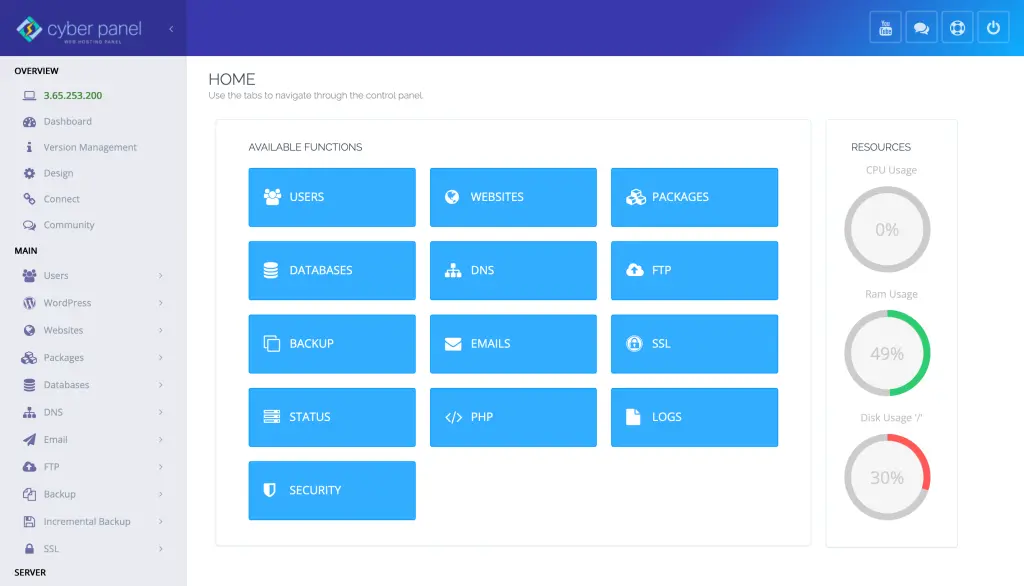As one of the most notable Linux distributions, Ubuntu has a wide usage around the globe among developers, data scientists, and system administrators. We will learn to install pip in Ubuntu.
In case you are developing web applications, automating workflows, or performing data analysis, Python is more often than not your go-to language. Yet, the charm of Python comes to life when you consider the packages it has to offer, and this is exactly what Pip does. If you are wondering how to install pip in Ubuntu, then just know that with a single command, you have access to thousands of Python libraries.
The issue is that installing Pip is not as simple as one might think, especially for inexperienced users. This guide focuses on how to install pip in Ubuntu with helpful steps, clear outputs, accurate commands, and optimized results. Whether setting up a development environment or deploying a server, there’s always a need to know what command to install pip in Ubuntu. From installing pip in Ubuntu and managing packages to using the command line, we have CLI and GUI instructions for CyberPanel at your disposal.
Let us take it from here!
How to Install Pip in Ubuntu: Step-by-Step Guide
Here is the stepwise process of how to install pip in Ubuntu:
Step 1: Update Your System
As a rule of thumb, have the latest updates for your files/binaries and the most recent.
Get exclusive access to all things tech-savvy, and be the first to receive
the latest updates directly in your inbox.
sudo apt update && sudo apt upgrade -yOutput for the mentioned command:
Reading package lists… Done
Building dependency tree
Reading state information… Done
All packages are up to date.Step 2: Check the Version of Python
Before moving on with further steps cross cross-checking the installation of Python in your system, along with its version is helpful.
python3 --versionOutput
Python 3.10.12In case Python is not installed:
sudo apt install python3 -yStep 3: Installing Pip for Python 3
In your case of dealing with pip in Ubuntu, running the below command would suffice.
sudo apt install python3-pip -yOutput
Setting up python3-pip (22.0.2+dfsg-1) ...
Processing triggers for man-db (2.10.2-1) ...That marks the end of the process of installing pip in Ubuntu.
Step 4: Verify Pip Installation
After Step 3, you need to check the function of Pip:
pip3 --versionOutput
pip 22.0.2 from /usr/lib/python3/dist-packages/pip (python 3.10)Now, you can practically any package in Python:

pip3 install requestsOutput
Successfully installed requests-2.28.1How to Install Pip Installer in Ubuntu Environment
In some cases, the proposed solution will not be appropriate for one’s needs. You should learn how to install Pip installer in Ubuntu environment. We are going to use get-pip.py
curl https://bootstrap.pypa.io/get-pip.py -o get-pip.py
python3 get-pip.pyOutput
Successfully installed pip-23.2.1Best Practices: Post Pip Installation in Ubuntu
Here are some best practices to follow after you install Pip in Ubuntu:
- Always replace pip with pip3 when using Python 3.
- Apply virtual environments to refine dependency separation:
python3 -m venv myenv
source myenv/bin/activate- Upgrade Pip after installation:
pip3 install --upgrade pipRole of CyberPanel in Pip Management

CyberPanel is an advanced web hosting control panel. It simplifies backend manipulations through the interface. For Python developers working with Ubuntu servers, CyberPanel offers:
- Web Terminal: Using the terminal integrated into the CyberPanel, you can directly execute ‘pip3 install’ commands for hosted applications, eliminating the need for SSH.
- Python Environment: When using LSCP, you can set up different Python environments for each web application, enabling distinct setups for every project.
- Automation: Pip install scripts can be executed or scheduled via CyberPanel’s cron jobs.
- Security: Leverage streamlined access control and monitoring to secure pip package management.
This is what makes CyberPanel a good fit for developers who prefer a point-and-click interface or need to efficiently handle multi-environment setups.
FAQs
How to install Pip in Ubuntu?
You can use this command to install Pip for Python 3:
sudo apt install python3-pip -y
Do I have to install Python before Pip?
Yes, it is essential to install Python first.
Is it safe to install Pip using get-pip.py?
It is safe if it is from the official source.
Final Thoughts: Supercharge Your Python Projects!
Knowing how to install pip in Ubuntu is beneficial, as it significantly improves your Python projects. With just a few terminal commands, you can access thousands of powerful libraries that can be leveraged for data science, automation, web development, and countless other fields. Pip is essential, whether setting up a local development environment or configuring production servers.
Furthermore, managing your Python instruments with CyberPanel is effortless because of its built-in terminal, task scheduling capabilities, and security settings. So don’t stop here—enhance your Python experience right now!
Want to accelerate your Python projects? Go ahead and install Pip on Ubuntu today!



